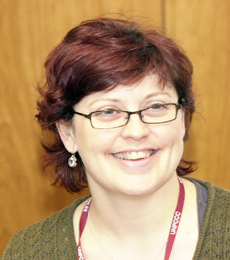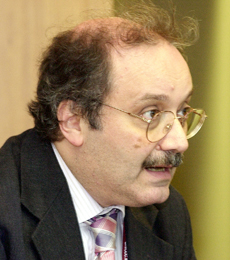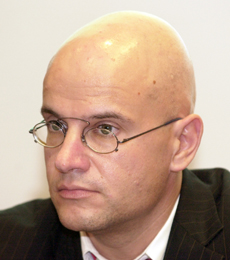 |
||
|
Published by the International Institute for Sustainable Development (IISD)
in cooperation with the UNFCCC Secretariat |
|||
|
Special Report on Selected Side Events at SB 24
|
|||||
| 15-26 May 2006 | Bonn, Germany | |||||
 |
|||
 |
|||
Events convened on Monday, 22 May 2006
|
Where next for the EU Emissions Trading Scheme? Presented by the UK |
||||
|
Merylyn Hedger, Environment Agency, UK, presented the Life Emissions Trading Scheme Update (LETS Update), which looks at the technical feasibility of expanding the EU ETS in future phases to cover additional sources of greenhouse gases (GHGs) and options for improving the design and harmonization of this scheme. She explained that the project was undertaken in two phases: a scoping phase to prioritize the areas of greatest importance for more detailed study; and a main phase focusing on technical assessment overseen by various working groups. She emphasized that the outcomes of the LETS Update project will contribute to the European Commission’s 2006 review of the EU ETS. Domenico Gaudioso, Agency for the Environment and Technical Services, Italy, noted that the EU ETS currently covers approximately 50% of carbon dioxide emissions across the EU and outlined the results reached by the working group that considered the expansion of the EU ETS to other sectors. He said criteria chosen to assess inclusion of additional GHGs in the ETS include: the significance of sources; the uncertainty of emissions estimates; the availability of abatement technologies; the number and size of emitters; and the effectiveness of other policies. He stated that agriculture, landfills and transport did not pass the initial screening because they consist of a large number of small emitters or that emissions from these sectors emanate from diffuse sources. He said the aluminum, parts of the chemicals, and the coal mining sectors had been recommended for inclusion in the ETS while the commercial and industrial refrigeration sector had been examined but not recommended for inclusion. Noting that various sectors are difficult to tackle due to the presence of a large number of small emitters, Molly Anderson, Environment Agency, UK, said these sectors should be addressed to ensure they contribute to achieving the Kyoto targets. She explained that the LETS Update project found that the introduction of a domestic offset programme could provide an incentive for emissions reductions in sectors not covered by the EU ETS. On the interaction between the EU ETS and other EU policies, she indicated that the LETS project concludes that existing policies could be synergized to achieve overall environmental objectives and that new policies could be designed to take account of the EU ETS. |
||||
|
|||
|
Sharing of experiences with the methods for adjustments of GHG emission inventories Presented by the UNFCCC Secretariat |
|||
|
Katia Simeonova, UNFCCC, highlighted Parties’ increased interest in the adjustments exercise of GHG emission inventories over the 2004-2005 period.
Astrid Olsson, UNFCCC, described the process for the 2005 adjustments exercise, emphasizing that the interactions between the Parties and the expert review team (ERT) are crucial to solving potential adjustment cases, in particular when problems arise due to lack of transparency. Newton Paciornik, Ministry of Science and Technology, Brazil, described the 2005 adjustments exercise from the perspective of lead reviewers, based on a single case. He concluded that the review identified the problems easily and that it was both useful and relevant. Audun Rosland, Norwegian Pollution Control Authority, highlighted discrepancies between Norway’s and the ERT’s emissions estimates from the aluminum sector. He stated that albeit disagreement, the adjustments exercise provided Norway an incentive to review its accounting method for perfluorocarbons from aluminum production. Tinus Pulles, TNO Built Environment and Geosciences, provided a second lead reviewer’s perspective on the 2005 adjustments exercise. He said Parties respond differently to the review and the adjustments procedure, suggesting that a peer review might be more efficient than the legalistic perspective, which leads to repeated interactions and lengthy texts. Participants discussed: the length of the exchange of views between Parties and the ERT when disagrement on adjustments exists; and emissions estimates when specific data is unavailable. |
|||
|
|||
|
Can sectoral approaches to the CDM promote renewable energy technology? Presented by the Wuppertal Institute for Climate, Environment and Energy |
|||
|
Wolfgang Sterk, Wuppertal Institute for Climate, Environment and Energy, highlighted the current status of renewable energy technologies (RETs) in the CDM and the potential role of sectoral approaches to the CDM. Noting some of the barriers to using RETs in the CDM such as high transaction and up-front investment costs, he outlined the different options for a sectoral approach to the CDM. He listed some of the potential benefits of sectoral approaches, including aggregation of small scale activities and enhanced sector-wide transformations. Outlining the disadvantages, he suggested that sectoral approaches might swamp the market with CERs and exacerbate current geographical imbalances in CDM.
Klaus Oppermann, World Bank, highlighted the Bank’s experience with programmatic CDM. He emphasized that while the CDM is a success for renewables, many important areas such as household heating and cooking, and transportation in developing countries are underrepresented. He stressed that RETs can utilize the existing bundling rules set by the CDM Executive Board, but noted problems with availability of methodologies for rural electrification and the new additionality tool. He added that there are high transaction costs and loss of CERs involved in small-scale CDM projects. Johannes Lackmann, German Renewable Energy Federation, presented German and European experiences in promotional schemes for renewable energies. He underscored the presence of large subsidies for nuclear and fossil fuels as one of the main impediments to the growth of the worldwide renewables market. He outlined the major support schemes for RETs in Germany, such as research and development budgets, eco-taxes and feed-in-tariff systems. Emphasizing the effectiveness of some of the promotional policies for RETs in the electricity sector such as the use of differentiation schemes, he noted that the emissions trading scheme is one of the most expensive options in terms of energy prices. Christoph Bals, Germanwatch, examined whether programmatic and policy CDM could promote RETs. Noting some of the problems with programmatic CDM, he highlighted the prospects of linking national incentive schemes for renewable energy such as feed-in-tariff systems with the CDM. Participants discussed the utility of eco-taxes versus market based instruments in economies other than Germany and the applicability of German policy tools to dual energy markets such as those in Africa. |
|||
|
|||
|
Presentation on the MAC Directive Presented by the European Commission |
|||
|
Agnieszka Kozakiewicz, European Commission, stated that the main objectives of the upcoming EU directive on Mobile Air Conditioning systems (MACs) are phasing out and controlling the leakage of fluorinated gases with global warming potential (GWP) higher than 150. She indicated that the directive mainly applies to passenger cars and that its review might lead to the extension of the regulation to other vehicle categories. She emphasized that the directive is technology neutral rather than prescriptive and treats all manufacturers equally.
Jane Amilhat, European Commission, provided an overview of the European regulation on fluorinated gases and highlighted that it focuses on containment and recovery measures of fluorinated gases in the Kyoto Protocol such as hydroflurocarbons, perflurocarbons and sulfur hexafluoride gases. She stated that the regulation also contains provisions on training, certification, data-reporting, labeling, and market prohibitions. She emphasized that the regulation and the MAC directive could lead to an emission reduction of approximately 21 million tons of GHGs by 2012 and 40 million tons around 2020. Participants discussed possible effects of the MAC directive and the regulation on fluorinated gases on overall emission reductions and climate change abatement. |
|||
|
|||
|
Transfer of innovative renewable energy technologies: experiences of German companies with CDM/JI Presented by Germany |
|||
|
Volkard Riechmann, North Rhine-Westphalia State Secretary, said energy efficient and renewable energy technologies are the only valid energy choices that lead to sustainable development. He described the outcomes of the 2004 International Conference for Renewable Energy and noted North Rhine-Westphalia’s expertise in operating efficient coal-fired power plants.
Sonja Butzengeiger, Ministry for the Environment, Germany, stated that while Germany does not intend to use the CDM or JI mechanisms to reach its Kyoto targets, the German private sector is involved in these activities. She described the German CDM and JI project portfolio, which includes 13 CDM projects primarily focused on biogas and biomass. Michael Fübi, RWE Power, discussed the industry’s perspective on the future of the CDM and JI market, suggesting that most of the low-cost GHG abatement projects will mainly be those that abate hydrofluorocarbons, nitrous oxide or methane. Stephan Waerdt, Pro2 Anlagentechnik, said the capture of coal mine and landfill gas will substantially reduce GHG emissions and could make significant contributions to meeting energy needs, especially in South America and Asia. Ahmet Lokurlu, Solitem GmbH, provided an overview of a solar based air-conditioning and steam generation system, noting that hotels are important clients. |
|||
|
|||
|
||
|
Click the above button to go back to our ENB main coverage
|
||
|
|
|
|
|
||
|




-tn.jpg)
-tn0.jpg)
-tn.jpg)
-tn0.jpg)
-tn.jpg)
-tn.jpg)




-tn.jpg)
-tn.jpg)
-tn.jpg)



-tn.jpg)
-tn.jpg)

